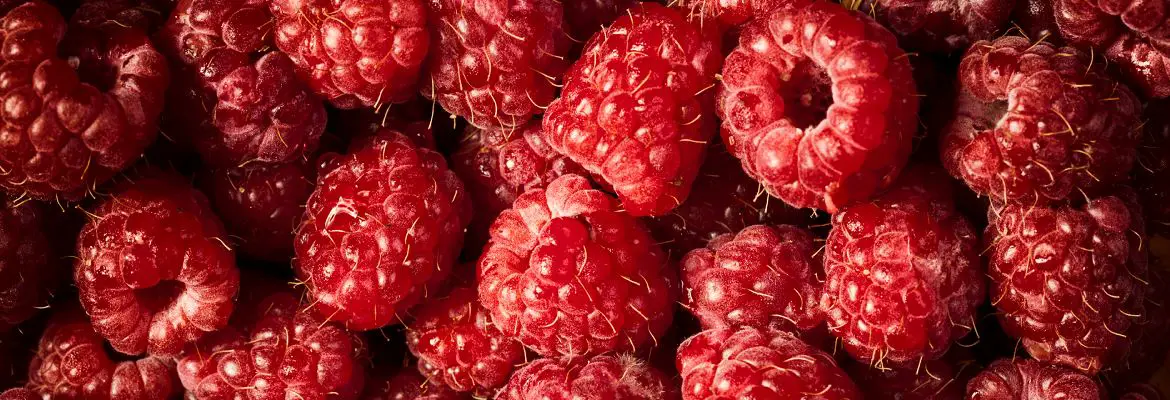Raspberries are small, aggregate fruits. Raspberry is composed of a series of round, drupelets that fuse together to form a bumpy, textured, and bubbled appearance.
A clustered section, called a drupelet, contains fine hairs, seeds, and juice, all growing over a spongy core that remains with the plant once the fruit is picked. The flesh of the raspberry is also typically soft, tender, juicy, and mildly crunchy, with 100 to 120 seeds encapsulated in each drupelet.
Depending on the variety, raspberries can range in color from the popular red and black varieties to purple, yellow, or golden varieties.
Average diameter of a raspberry is 1 to 3 cm (0.4 to 1.2 inches). Average weight of raspberry fruit ranges from 1 to 5 grams ( 0.04 to 0.18 Ounces).

Scientific name of Raspberry
Rubus Idaeus
Other names of Raspberry
- Rasp
- Rough Berry
- Frambuesa
- Red Raspberry
- Berries
Calories by source in Raspberry
- Calories by carbohydrate in Raspberry = 82%
- Calories by fat in Raspberry = 10%
- Calories by protein in Raspberry = 8%
Fats and Fatty Acid profile of Raspberry
- Polyunsaturated fat (PUFA) in Raspberry = 82%
- Saturated fat (SFA) in Raspberry = 4%
- Monounsaturated fat (MUFA) in Raspberry = 14%
Nutrition facts of Raspberry
*Serving size = 100 grams = 3.55 Ounces = 1/2 cup
*DV= % Daily Value (%DV indicates how much nutrients contribute to a person’s daily diet from a serving of a food. DV assists you in determining whether or not a serving of food is high or low in a particular nutrient.)
| Nutrient | Amount | Unit | DV |
|---|---|---|---|
| Calories | 52 | KCAL | |
| Fat | 0.65 | GRAM | 1% |
| Protein | 1.2 | GRAM | 2% |
| Carbohydrate | 11.94 | GRAM | 4% |
Detailed vitamin profile of Raspberry, vitamin A, vitamin B12, vitamin B6, vitamin C, vitamin D, Folate, Niacin, Thiamin, and Riboflavin is shown in the chart.
Detailed mineral profile of Raspberry, Sodium(Na), Calcium(Ca), Copper(Cu), Iron(Fe), Magnesium(Mg), Selenium(Se), Phosphorus(P), Potassium(K) and Zinc(Zn) is shown the chart.
Check freshness in Raspberry
- Select plump and unbroken raspberries
- Bad raspberry will be soggy and mushy
- Avoid moldy raspberry with dull color
- Ripe raspberries are pinkish red in color
- Unripe raspberries will be more peach colored (light red or even white)
Availability of Raspberry
- The Seasons of Raspberry depend on the geographical location but generally available round the year
- Germany – Raspberry season ranges from June – October
- USA – Raspberry season ranges from June – October
- Poland – Raspberry season ranges from June – August
How to store Raspberry
- Raspberries can be stored at room temperature for about a day
- Avoid washing the raspberries when trying to store
- Raspberries can be stored in refrigerator in ventilated boxes (avoid airtight container) for 3-4 days
- Raspberries can be stored in freezer for about 6 months
- Do not store raspberries in the crisper section of the fridge as the air in crisper is more humid
Complete nutrition facts of Raspberry
Click on the link HERE to download high quality, high resolution and print ready PDF version of the Raspberry nutrition chart/infographic.


